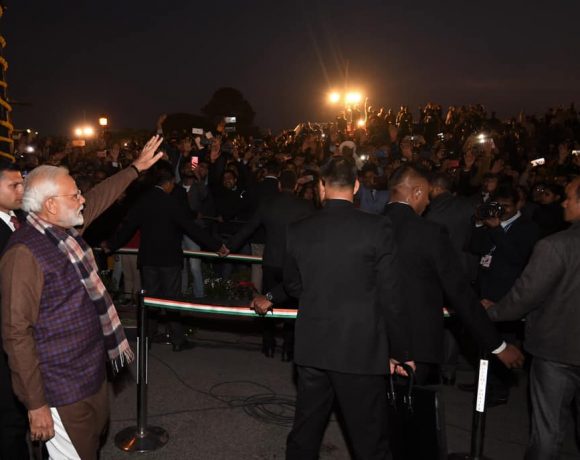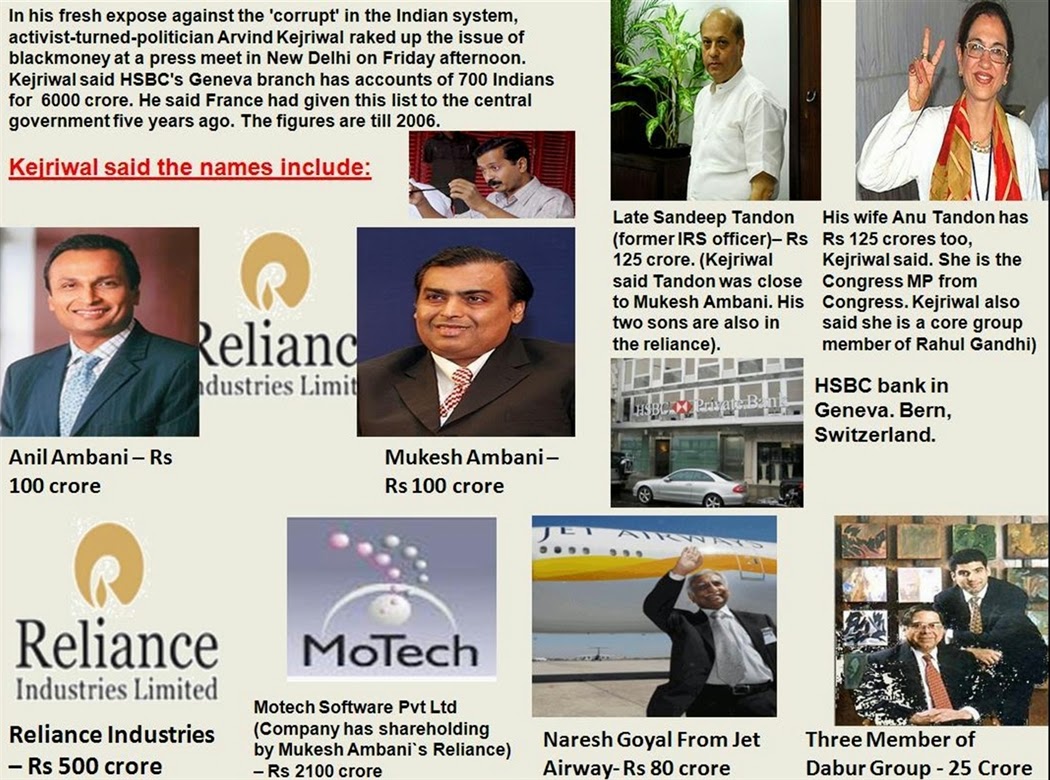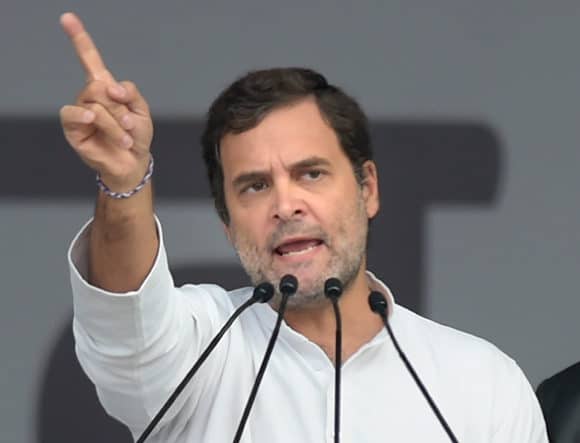

Coming from an Indian Muslim – and Dr Kalam was proud of being an Indian and a Muslim – the book is indeed an unusually candid description of the “transformation” that he experienced in his fellowship with the 93-year-old head of the Swaminarayan Sampraday. This Hindu religious establishment is best known for the magnificent Akshardham Temple it has built on the banks of the Yamuna in Delhi. Dr Kalam was the chief guest at the opening of the temple in 2005. Let’s not forget, he was then the President of India.
Neither Dr Kalam nor Pramukh Swamiji were present at the function. But we were shown video clips of their interactions, the last of which was on June 20, when the devotee travelled to meet his spiritual guru at his ashram in Sarangpur in Gujarat. If we read the following words of Dr Kalam, we can sense that he was aware of his impending departure from Planet Earth into what he himself called the “God-synchronous orbit”.
Dr Kalam writes in the book: “How do I summarise Pramukh Swamiji’s effect on me? He has indeed transformed me. He is the ultimate stage of the spiritual ascent in my life, which started with my father (Jainulabdeen), was sustained by Dr Brahma Prakash and Prof Satish Dhavan (both eminent scientists at ISRO and his mentors in his own illustrious career in scientific research); now, finally, Pramukh Swamiji has put me in a God-synchronous orbit.”
Yesterday (July 27) in Shillong, Dr Kalam’s voyage entered into that region of the Unknown where all living beings must someday go. As someone who had interacted with him closely in the past 15 years, I join millions of his admirers in saying, “Farewell, President Kalam. You were truly a Bharat Ratna, a Jewel of India”.
But I want to go back to the question that the BJP supporter, who too was obviously an ardent admirer of Dr Kalam, put to me at the book launch function. For it is a question that is, in some ways, at the heart of understanding, and also misunderstanding, both Dr Kalam and the nation that produced him. My young friend wanted to know: “Why don’t other Indian Muslims respect Hinduism and Hindu spiritual personalities the way Dr Kalam does?”
I replied by asking him a counter-question: “Why don’t you, and other supporters of BJP and RSS like you, respect Islam? Does the RSS publicly and respectfully acknowledge the Islamic heritage in India? Does it honour venerable Muslim spiritual personalities?”
I added: “I have great regard for Dr Kalam, not only because he genuinely respects what is good in faiths other than the one he was born in, but also because he does not hide it. India is, and has always been, a land of multiple faiths. It is a holy land because it accepts the holiness of all faiths. If you and I, as Hindus, sincerely admire Dr Kalam, then we have a duty to ask ourselves, ‘Why can’t all Hindus be like Dr Kalam?’ Why shouldn’t we, like him, establish fellowship with all Indians, irrespective of their caste or creed? This is called true secularism. The hypocrisy of many BJP-RSS supporters is that they demonize the concept of secularism while idolizing Dr Kalam.”
Here I must also mention the patent double-standards of many Muslims who want India to be secular, but do not like their co-religionists to associate themselves with anything “un-Islamic”. They disliked Dr Kalam for being “more Hindu than Muslim”, forgetting that true faith resides not in the identity of one’s religion, but in the purity of one’s heart and in the humaneness of one’s conduct. They did not like that he took inspiration from the Bhagavad Gita, and that he widely publicised his spiritual affinity with non-Muslim religious leaders like Pramukh Swamiji and the late Acharya Mahapragya, the widely-revered Jain monk, with whom he collaborated to author the book The Family and the Nation in 2008.
I had the good fortune of seeing the close bond between Acharya Mahapragya and Dr. Kalam. In 2006, I had gone to Ladnun, a small desert town in Rajasthan, to have Acharya’s darshan. He was staying on the campus of the Jain Vishwa Bharati University. It was a special occasion – the 75th anniversary of his acceptance of diksha, an initiation ceremony for a disciple by a guru that is common in many religions. There was a lot of excitement in the air since Dr Kalam, who had collaborated with the Acharya on many worthy projects, was going to deliver a message via a video link from Rashtrapati Bhavan. Here was reassuring proof of the Indian ethos of statecraft and secularism: the Head of the Indian Republic was seeking the blessings of a holy man, and that too from one who denominationally belonged to a different faith!
This is not something Dr Kalam started doing after he became well-known in public life. He had learnt his secularism from the social and cultural milieu of his humble childhood in Rameswaram in Tamil Nadu. He writes in Transcendence: “I have vivid memories of my childhood, but one memory particularly stands out. As a ten-year-old boy, I recall three contrasting personalities meet from time to time in our home: Pakshi Lakshmana Shastrigal, the Vedic scholar and head priest of the famous Rameswaram Temple; Rev. Father Bodal, who built the first church on Rameswaram Island; and my father, who was an imam in the mosque. These three would sit in our courtyard, each with a cup of tea; and they would discuss and find solutions to the various problems facing our community.”
As he grew up, this innate belief grew stronger in him that India’s various problems, too, could be solved only through dialogue and cooperation among religious, social and political leaders.
I first met Dr Kalam when he was the scientific advisor to India’s Defence Minister and I was working in the Prime Minister’s Office. George Fernandes was the raksha mantri in Atal Bihari Vajapyee’s government, and that proved decisive in Dr Kalam in becoming the 11th President of India. Dr Kalam was a rank outsider when the BJP-led National Democratic Alliance started searching for its candidate to replace Dr KR Narayanan, whose desire for a second term was not backed by the ruling coalition. Vice President Krishna Kant was keen on moving to Rashtrapati Bhavan, but his name was also ruled out by the NDA. Prime Minister Vajpayee and LK Advani, who was No. 2 in the Cabinet as well as in the BJP, wanted an eminent non-Hindu to be the NDA’s candidate in the presidential election, scheduled in July 2002. In this, they were motivated by the desire to project the BJP’s commitment to secularism, especially in the aftermath of the communal violence in Gujarat in February of that year.
The NDA first zeroed in on the name of Dr PC Alexander, who was then the Governor of Mahrashtra. An erudite and highly experienced civil servant (he served as the Principal Secretary to Prime Ministers Indira Gandhi and Rajiv Gandhi), he had earned the respect of both Vajpayee and Advani. Dr Alexander’s name, however, did not find favour with Congress chief Sonia Gandhi. And since the Prime Minister wanted the president to be elected with maximum consensus in the political spectrum, he decided to look for a new candidate.
This is when Fernandes proposed the name of Dr Kalam, and the suggestion was quickly and enthusiastically endorsed by the NDA. Since Dr Kalam had little contact with MPs and leaders of political parties, his campaign office was located in the Safdarjung Road residence of the late Pramod Mahajan, who was the BJP’s main trouble-shooter those days. I played a small role in helping Dr Kalam with his election-related communication.
Dr Kalam was undoubtedly the most non-political and non-traditional person ever to become India’s Rashtrapati. Dr Radhakrishnan and Dr Zakir Hussain, both highly-respected educationists, also had non-political backgrounds. However, because of their close association with the freedom movement and with its stalwarts like Mahatma Gandhi and Jawaharlal Nehru, their coming to Rashtrapati Bhavan was regarded as natural. In contrast, not much was known about Dr Kalam, except that he was a scientist who had made a pivotal contribution to India’s missile programme. Yet, he became the most popular President in India’s history, one who did not allow his unfamiliarity with politics to handicap him in discharging his duties as the custodian of the Constitution.
As President, he brought the issue of development to the centrestage of the national discourse by coining the imaginative slogan ‘India as a Developed Nation by 2020’. On one hand, he promoted innovative ideas like PURA (Provision of Urban Amenities in Rural Areas). On the other, he prodded the Vajpayee and Dr Manmohan Singh governments to pay greater attention to India’s self-reliant progress in science and technology. Above all, bypassing the political establishment, he reached out to India’s youth and children. There is little doubt that no Indian leader after Pandit Nehru caught the imagination of India’s children as strikingly as Dr Kalam did.
I played a small role again in 2012 when the NDA, a much weaker entity than it was a decade earlier, wanted Dr Kalam as its candidate to contest the presidential election. I was the interlocutor between him and BJP leaders, especially Advani. Dr Kalam gave his consent to the offer, with one crucial proviso: all the parties had to accept him as their consensus candidate. That, however, was not possible. It was also not possible to conclusively demonstrate that he would win in the event of an election. The idea was given up.
However, India was not quite the loser. In Pranab Mukherjee, the country gained a seasoned and mature President in 2012, unlike in 2007, when, denying Dr Kalam a well-deserved second term, the Congress imposed a least-deserved Pratibha Patil on the nation.
Dr Kalam was the gracious chief guest at the release of my book Music of the Spinning Wheel: Mahatma Gandhi’s Manifesto for the Internet Age, which took place at Gandhi Smruti in New Delhi in September 2012. He appreciated my effort to re-discover the scientific core of the Mahatma’s philosophy. “The idea of finding a correlation between the philosophy of Gandhiji’s spinning wheel and the revolutionary potential of the Internet is truly novel,” he said to me.
I am saying this to underscore the fact that this so-called “missile man” was, at heart, a man of peace and non-violence. In his bookTranscendence, Dr Kalam writes: “There is no such thing as defeat in non-violence…Non-violence is the most powerful strategy to maximize the meaning of our lives. Non-violence means living your life sincerely …listening the harmonies of the universe.”
Now that this amazing Indian, who embodied the meaning of the Idea of India, who loved playing the harmonies on his Veena, has entered the unknown reaches beyond the universe, we can only be grateful to him for having contributed to harmony in India.
(The writer was an aide to former Prime Minister Atal Bihari Vajpayee. Comments are welcome at sudheenkulkarni@gmail.com)



















